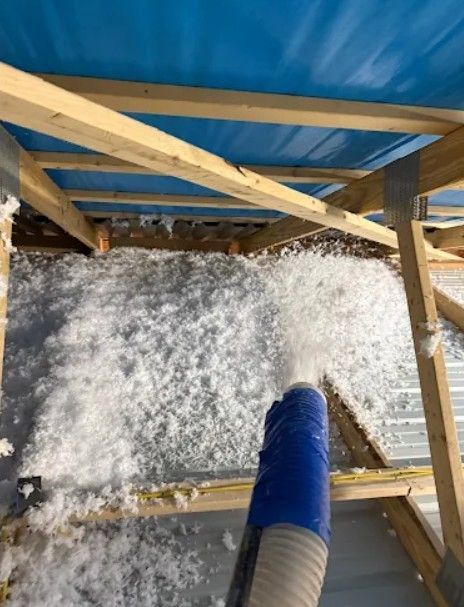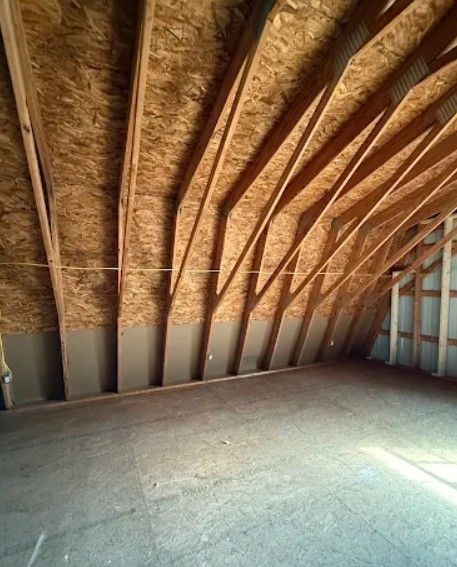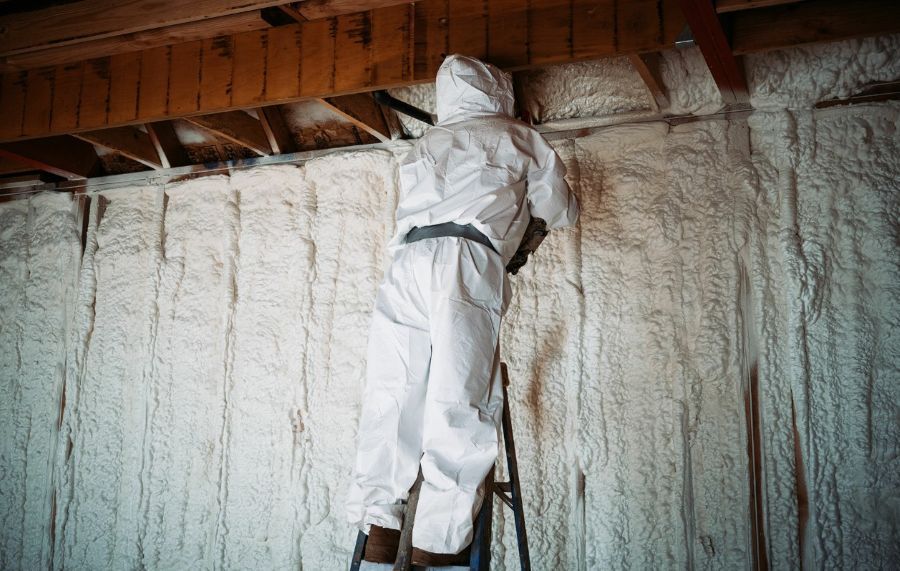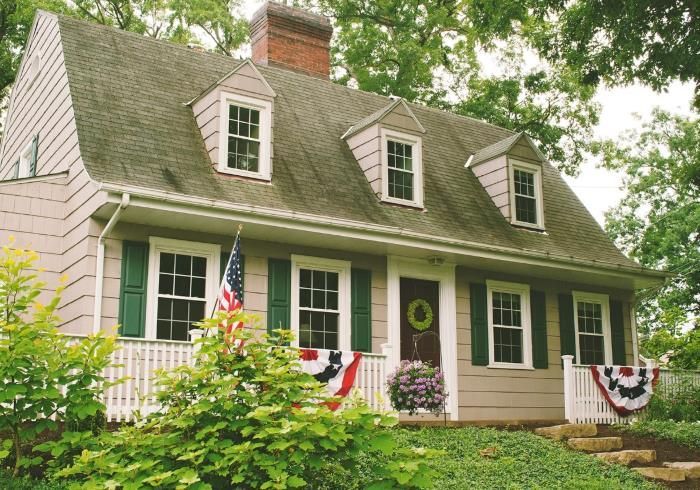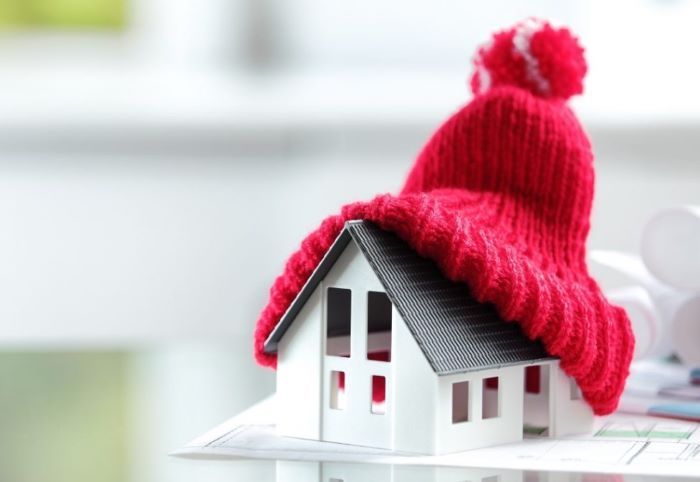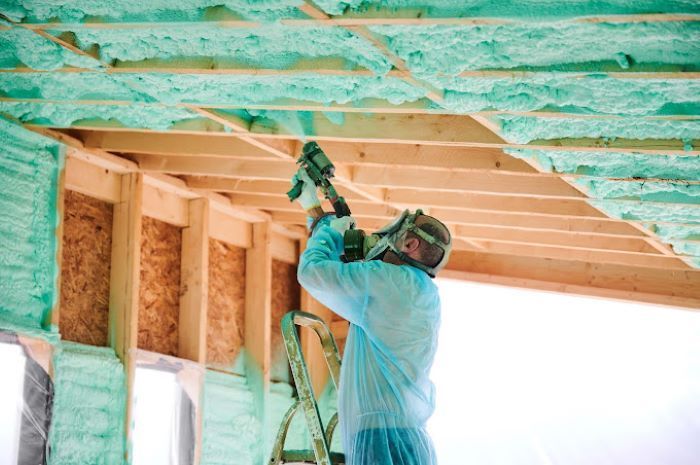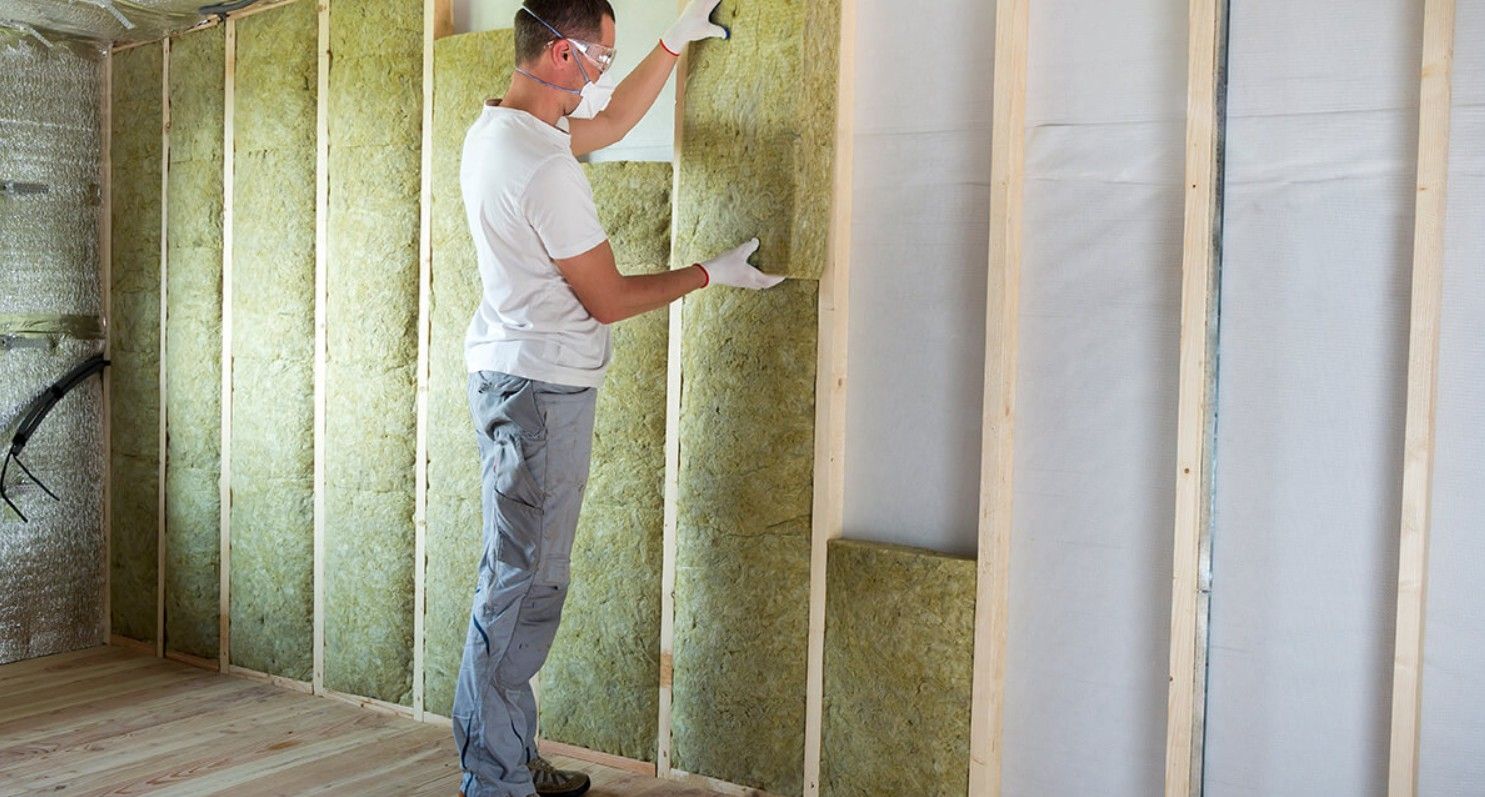
For homeowners in New York and Pennsylvania, insulation is one of the most important investments you can make for your property. A well-insulated home helps regulate indoor temperatures, lowers heating and cooling bills, reduces noise, and adds to long-term comfort. The challenge lies in deciding which type of insulation is the best fit.
Three of the most common solutions are spray foam, batt, and blown-in insulation. Each has its own strengths and limitations, and the right choice depends on your home’s structure, your budget, and your long-term goals.
At HD Solutions, we provide comprehensive insulation services across New York and Pennsylvania. Drawing on years of hands-on installation experience, our team has seen how different insulation performs in varying conditions. This guide will break down the three main options so you can make a confident decision for your home.
Spray Foam Insulation: Maximum Efficiency and Long-Term Benefits
Spray foam insulation is one of the most effective ways to seal and insulate a property. It expands to fill gaps and cracks, creating an airtight barrier that is difficult to match with other methods.
Key Benefits of Spray Foam Insulation
– Energy savings: By forming a tight seal, spray foam dramatically reduces air leaks, which leads to lower utility bills. Homeowners often notice more consistent indoor temperatures as well.
– Moisture resistance: Spray foam is highly resistant to water penetration, which helps prevent issues like mold and mildew. This is particularly important in regions of Pennsylvania that deal with higher humidity.
– Durability: Spray foam typically lasts as long as the structure of the home, making it a one-time investment that requires little maintenance.
Considerations Before Choosing Spray Foam
– Spray foam tends to be the most expensive option upfront.
– It requires skilled application, since improper installation can reduce performance.
– Homeowners may need to leave the property temporarily during installation due to ventilation needs.
For many households, the long-term efficiency and durability justify the higher initial cost. If you are considering this option, explore our dedicated spray foam insulation services to see how it can benefit your property.
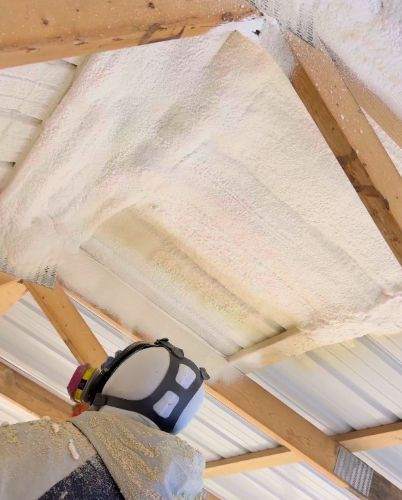
Batt Insulation: Reliable and Cost-Effective
Batt insulation is one of the most widely used forms of insulation in American homes. It consists of fiberglass or mineral wool sheets that are cut and fitted between wall studs, joists, and rafters.
Key Benefits of Batt Insulation
–
Affordable installation: Batt insulation is less costly than spray foam, making it an attractive choice for homeowners on a budget.
–
Straightforward installation: When installed by a professional, batt insulation can be fitted efficiently and adjusted to match the layout of your home.
–
Soundproofing qualities: Fiberglass batts can also help reduce noise transmission between rooms, which improves overall comfort.
Considerations Before Choosing Batt Insulation
– Batt insulation is less effective at sealing air leaks compared to spray foam. Gaps or compression can reduce performance significantly.
– It may not last as long in areas prone to moisture, since fiberglass batts can lose efficiency if they become damp.
Even with these considerations, batt insulation can still deliver reliable results, particularly when installed by a skilledfiberglass insulation installer. It remains a practical solution for many homes in both New York and Pennsylvania.
Blown-In Insulation: Flexible Coverage for Attics and Walls
Blown-in insulation is applied using a machine that blows loose-fill fiberglass or cellulose into spaces. It is commonly used in attics, but it can also be applied in wall cavities and other areas where batt insulation would be difficult to install.
Key Benefits of Blown-In Insulation
–
Excellent coverage: Blown-in insulation can reach corners and irregular spaces that batts cannot, ensuring more complete coverage.
–
Cost-efficient upgrade: It is often used to add insulation on top of existing layers, making it a cost-friendly way to boost energy efficiency.
–
Noise reduction: Like batt insulation, blown-in options provide effective soundproofing benefits.
Considerations Before Choosing Blown-In Insulation
– Blown-in insulation may settle over time, which can reduce its R-value.
– It may not provide the same airtight seal as spray foam.
– Professional equipment is required, which means DIY installation is not practical.
For homeowners looking for a balance between cost and performance, blown-in insulation is often a smart choice. When applied correctly, it offers improved efficiency without the higher upfront investment of spray foam.
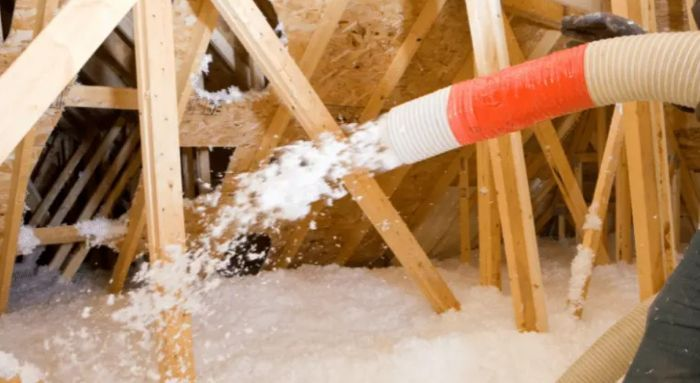
Comparing the Performance of Spray Foam, Batt, and Blown-In
When weighing insulation options, it is helpful to look at how each performs in terms of thermal resistance, air sealing, and long-term efficiency.
Spray Foam Insulation Performance
Spray foam provides the highest R-value per inch, making it extremely effective at retaining heat in the winter and blocking heat in the summer. Because it expands into gaps and cracks, it also creates a strong air barrier. This dual benefit makes spray foam the most effective choice for energy savings.
Batt Insulation Performance
Batt insulation offers solid thermal resistance, though it is not as airtight as spray foam. Gaps left during installation can reduce its effectiveness, which is why professional installation is so important. Batt insulation works well in new construction or remodels where walls are open and easy to access.
Blown-In Insulation Performance
Blown-in insulation fills spaces more thoroughly than batt insulation, especially in attics and irregular cavities. While it does not seal air leaks as spray foam does, it still provides strong thermal resistance. It is particularly useful for retrofitting older homes that require additional insulation without major construction.
Cost Considerations for New York and Pennsylvania Homeowners
Budget often plays a major role in the decision. Costs vary based on material, labor, and the size of the home, but here are general guidelines:
– Spray Foam: Highest upfront cost, but the most savings over time due to lower energy bills. Many homeowners view it as an investment in long-term efficiency.
– Batt Insulation: Lower upfront cost, making it appealing for homeowners seeking affordability. While savings may not be as large as spray foam, batt insulation still improves comfort and energy efficiency.
– Blown-In Insulation: Mid-range in cost, especially effective when used to top up existing insulation. It provides a balance of affordability and performance.
In colder parts of New York or Pennsylvania, where winters are long and heating costs are high, spray foam often pays for itself more quickly. In milder or smaller homes, batt or blown-in may provide enough value to meet comfort goals at a lower initial price.
Climate Suitability in New York and Pennsylvania
Each region’s climate plays a role in determining the right insulation.
For New York Homes
Homes in upstate New York experience long winters with heavy snow and strong winds. Spray foam excels in these conditions because it seals against air leaks that often occur in older homes. In areas with moderate winters, batt or blown-in insulation may be sufficient if installed properly.
For Pennsylvania Homes
Pennsylvania’s climate varies, with humid summers in the east and colder winters in the northwest. Blown-in insulation is often used in attics to combat summer heat, while spray foam is popular in crawl spaces and basements to prevent moisture problems. Batt insulation remains a common choice for new builds and remodels across the state.
By tailoring insulation to the climate and structure of the home, homeowners can achieve greater comfort and efficiency throughout the year.
Soundproofing Qualities
Noise reduction is another consideration for many households. Insulation not only helps control temperature but also affects how sound travels between rooms and from outside sources.
– Spray Foam: Provides some soundproofing benefits, although its main strength is energy efficiency.
– Batt Insulation: Particularly effective at reducing noise when using thicker fiberglass batts, which makes it a common choice for interior walls.
– Blown-In Insulation: Performs well in attics and walls, creating a buffer that helps absorb sound.
For homeowners in busy neighborhoods or near highways, soundproofing can be an important secondary benefit when choosing insulation.
Longevity and Maintenance
Another important factor is how long each type of insulation lasts and what level of upkeep it requires.
– Spray Foam: Can last the lifetime of the building without losing efficiency. It does not sag, settle, or degrade when installed properly.
– Batt Insulation: Typically lasts between 15 and 30 years, though its effectiveness may decline if it is exposed to moisture. Regular inspections can extend its lifespan.
– Blown-In Insulation: Offers a lifespan of about 20 to 30 years. However, settling over time can reduce its thickness, which may require periodic top-ups.
Homeowners planning to stay in their homes long-term often prefer spray foam for its durability, while those seeking a cost-effective solution may be comfortable with batt or blown-in, understanding that replacements or adjustments may be needed.
Making the Right Choice for Your Home
So, which insulation is right for you? The answer depends on your priorities.
– If you value maximum energy savings and long-term durability, spray foam is the best choice.
– If you are looking for an affordable, reliable option, batt insulation delivers solid results.
– If your home requires flexible coverage, blown-in insulation provides an excellent balance of performance and cost.
No matter which option you choose, professional installation is key. Poorly installed insulation can lead to air leaks, reduced efficiency, and even damage over time. Working with trusted local specialists ensures your insulation performs as expected.
At HD Solutions, we provide tailored insulation services across New York and Pennsylvania, helping homeowners select the right product and install it with precision. Whether you are considering spray foam insulation services or need a reliable fiberglass insulation installer, our team is ready to guide you through the process.
Final Thoughts
Choosing between spray foam, batt, and blown-in insulation is not just about price or convenience. It is about selecting the option that aligns with your climate, your budget, and your long-term comfort goals. By understanding the strengths and limitations of each material, you can make a confident investment in your home’s future.
For homeowners in New York and Pennsylvania, HD Solutions is committed to delivering energy efficiency, comfort, and professional results on every project. The right insulation does more than regulate temperature; it creates a healthier, quieter, and more valuable home.


